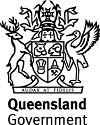Published Sunday, 30 July, 2023 at 07:00 AM

Minister for Resources
The Honourable Scott Stewart
Positive progress in regulated tree clearing throughout Queensland
- Newly-released tree clearing data shows a 70% reduction in regulated vegetation clearing over three years.
- The reduction in clearing also means a reduction in carbon emissions.
- A further 59,654 hectares of vegetation regrowth has been detected.
The latest nation-leading Statewide Landcover and Trees Study (SLATS) report shows vegetation management laws continue to protect Queensland’s native ecosystems.
The report analysed clearing rates of different vegetation types over the 2020-21 period, with the numbers demonstrating the right balance between vegetation management laws and the ability of landholders to maintain their properties.
Clearing of regulated vegetation reduced from about 98,000 hectares in 2019-20 to 61,000 hectares in 2020-21.
This year’s annual SLATS report shows that total woody vegetation clearing in 2020-21 decreased by 17 per cent compared to the previous year, and 49 per cent overall since 2018-19.
Of the overall clearing rate, 82% of the vegetation was assigned Category X, which is vegetation that has been previously cleared and is exempt from regulation under the vegetation management framework.
A further 59,654 hectares of regrowth was mapped as part of the study, adding to the 42,575 hectares of new growth mapped the previous year.
Quotes attributable to Resources Minister Scott Stewart:
“The reduction in regulated vegetation clearing of 70% over three years is a great outcome for biodiversity and carbon emission reductions in Queensland,” he said.
“The report shows Queensland’s strong vegetation management framework continues to protect our native ecosystems, while allowing landholders to manage their properties and grow the food and fibre that is fundamental to our economy and our regional communities.
“The results are encouraging and show the long-term, positive impacts of the legislative changes the Queensland Government made back in 2018. These laws have been and will continue to be based on the best available science.
“Our ongoing challenge is to reduce unlawful clearing and we’ll continue to work with landholders to educate and assist them in understanding their obligations.
“The majority of landholders are complying with our vegetation management laws but we will hold those to account who do the wrong thing.”
Quotes attributable to Environment Minister, Leanne Linard:
“The Palaszczuk Government’s strong vegetation management laws and investment in land restoration are working, contributing to better land management, climate change resilience, and biodiversity conservation.
“We have robust systems in place to protect Queensland’s rich biodiversity.”
Further information.
The Statewide Landcover and Trees Study (SLATS) is a scientific monitoring program undertaken by the DES Remote Sensing Sciences team in partnership with the Queensland Herbarium and Biodiversity Sciences, Department of Resources and the Joint Remote Sensing Research Program.
Satellite imagery and field data is used to monitor and report changes in woody vegetation extent in Queensland and provide information about other woody vegetation attributes such as age since disturbance.
SLATS monitors native woody vegetation, which is critical for maintaining biodiversity, preventing land degradation and improving water quality.
Spatial BioCondition is a new modelling and mapping framework that has been developed, and over time will be used to predict and map the condition of vegetation in most of Queensland’s regional ecosystems.
Further information about the SLATS report can be found here and here.
ENDS
Media contacts:
Minister Stewart: Chris Lees 0434 859 940
Minister Linard: Scott Chandler (07) 3719 7339

